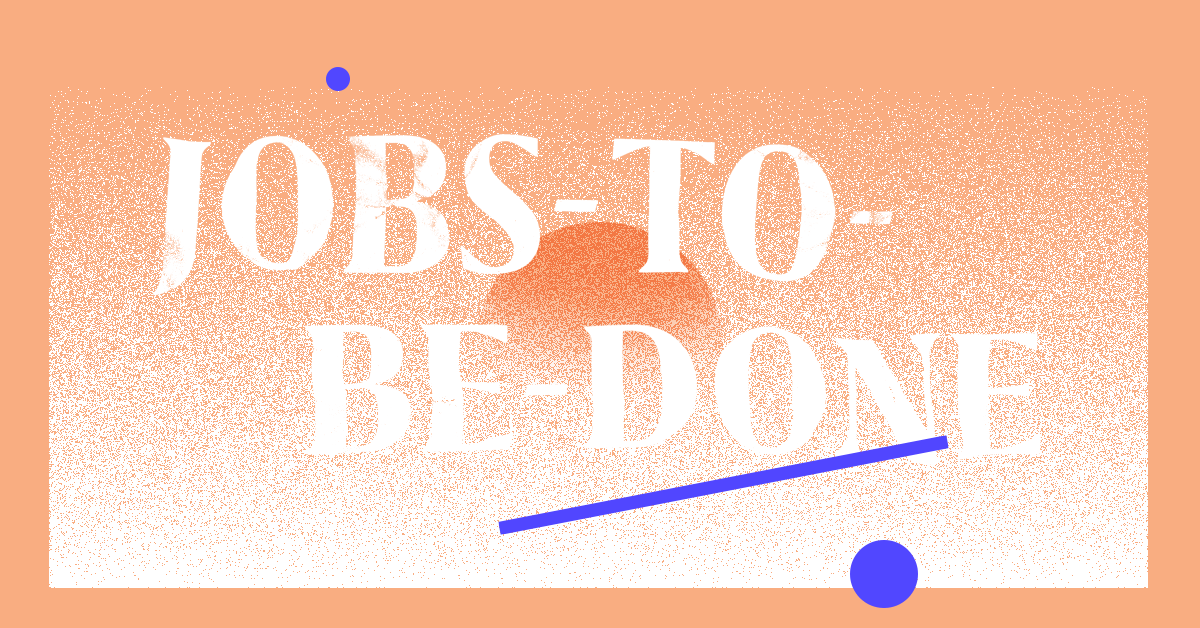Слои пользы
Прочитал книгу Джобс-ту-би-дан Интеркома. Отличная коротенькая книга:
Intercom on Jobs-to-be-Done

Intercom on Jobs-to-be-Done helps you understand the real job customers are using your product for.
www.intercom.com
Если вы читали что-то бюрошное об управлении и решении задач, найдёте в книге много знакомого. Но взгляд всё равно немного другой, поэтому интересно. Об одной штуке хочу рассказать подробнее.
Если вы слышали о полезном действии, для вас не будет новостью, что люди часто говорят, как надо сделать, хотя на самом деле хотят решить какую-то свою задачу. Грамотный подход - докопаться до сути, сформулировать задачу в виде полезного действия, а потом уже думать о решении. Интерком это всё тоже понял:
People are experts in their problem, not the solution. However, it is more natural to suggest a solution in the form of a feature request. Describing a suggested solution is easier than describing a problem, but you need to go back to them with questions to really understand their problem.
Интересным мне показался их подход к самому докавыванию. Понятно, что нужно задавать вопросы, среди которых большую роль играет вопрос «Почему?». Тему с пятью «Почему?» ребята тоже вспоминают. Но интересно, как они относятся к разным слоям понимания, которые ты проходишь, погружаясь в проблему.
Во-первых, они замечают, что важно не просто докопаться в глубину. Важно исследовать каждый слой, потому что все они влияют на принимаемые пользователем решения.
Во-вторых, ребята пишут, что не все слои одинаково полезны. Они выделяют три слоя, влияющих на продукт в наибольшей степени - это польза, удобство и желание.
В качестве примера они использую дрель, которая нужна чуваку, чтобы повесить рамки для фоток дома. Кусок главы:
The productive layers of the conversation
For any given behavior, you can dig as deep as you want. There are as many layers as you have time to discuss, each one relating to a deeper need. A deeper understanding of “Why?”
But when you’re exploring the value of a product, there are only so many productive layers to discuss. Here are the layers I’ve found the most valuable to fully explore:
1. The immediate layer relates to usefulness. What do you actually do with the thing? I use the drill to make holes.
2. The secondary layer relates to usability. What result comes from using it? I’ve made holes to hang photos.
3. The tertiary layer relates to desirability. What’s different now that I’ve accomplished my goal? I’ve hung photos and now have a more personal home.
Beyond these three layers, it becomes more difficult to relate things back to the product. For example, asking “Why do you want a more personal home?” is unlikely to lead to meaningful answers for a drill manufacturer.
You may still learn a lot about the person and what drives them, which is always valuable. But for me, it’s too abstract and is rarely immediately actionable.

The useful layer
In the electric drill example above, the initial response is the person needs to make holes. You can then dig into all of the possibilities to make the drill more useful.
Where will the holes be drilled? In concrete? Wood? Metal? What size of holes? Tiny holes to set smaller screws? Big holes for larger bolts?
How might that change the nature of the drill? Different power, torque, speed? Maybe speed settings? Different size drills? Changeable drill bits?
These are all great questions to flush out what exactly the drill should do and how to make it more useful. Unfortunately, it doesn’t reveal anything about how to make the drill easier to use.
The usable layer
The next layer of using the drill is to help someone hang their framed photos. If the outcome of using the drill is having framed photos on your wall, you can dig into a lot of possibilities of making the drill more usable.
What’s the behavior around hanging framed pictures? Are people comfortable using a drill? Are they standing on chairs or other dubious household objects while drilling? Are they nervous about doing it wrong? If we were designing a drill that only drilled holes to hang pictures, how much better could it be?
How would this change the nature of the drill? Does it require smaller batteries since it’s not so frequently used? A smaller motor and housing to reduce the weight? More prescriptive settings for typical house walls to reduce anxiety
These questions reveal what the person is doing with the drill and ways to make it more usable. Unfortunately, it still doesn’t reveal anything about how to make the drill more appealing.
The desirable layer
The next layer of using the drill is to make your home more personal. If the outcome of using your drill is you have a more personal home, you can dig into a lot of possibilities for making the drill more desirable.
How important is it for the drill to be ready to go when you come home with your next framed picture? Where do you put the drill when you’re done? Is it in a place where others might see it?
How does this change the nature of the drill? Does it need a docking station so it’s easy to put away? Or should it be plugged into the wall so it’s always ready to go? Does it need to look good if it’s going to be on a desk or shelf somewhere?
All great questions that can make the drill feel as though it’s been designed specifically for you. You can imagine it fitting perfectly into your life and satisfying all of your home personalization needs.
Так что исследуйте слои в ширину и концентрируйтесь на тех, что влияют на ваш продукт.